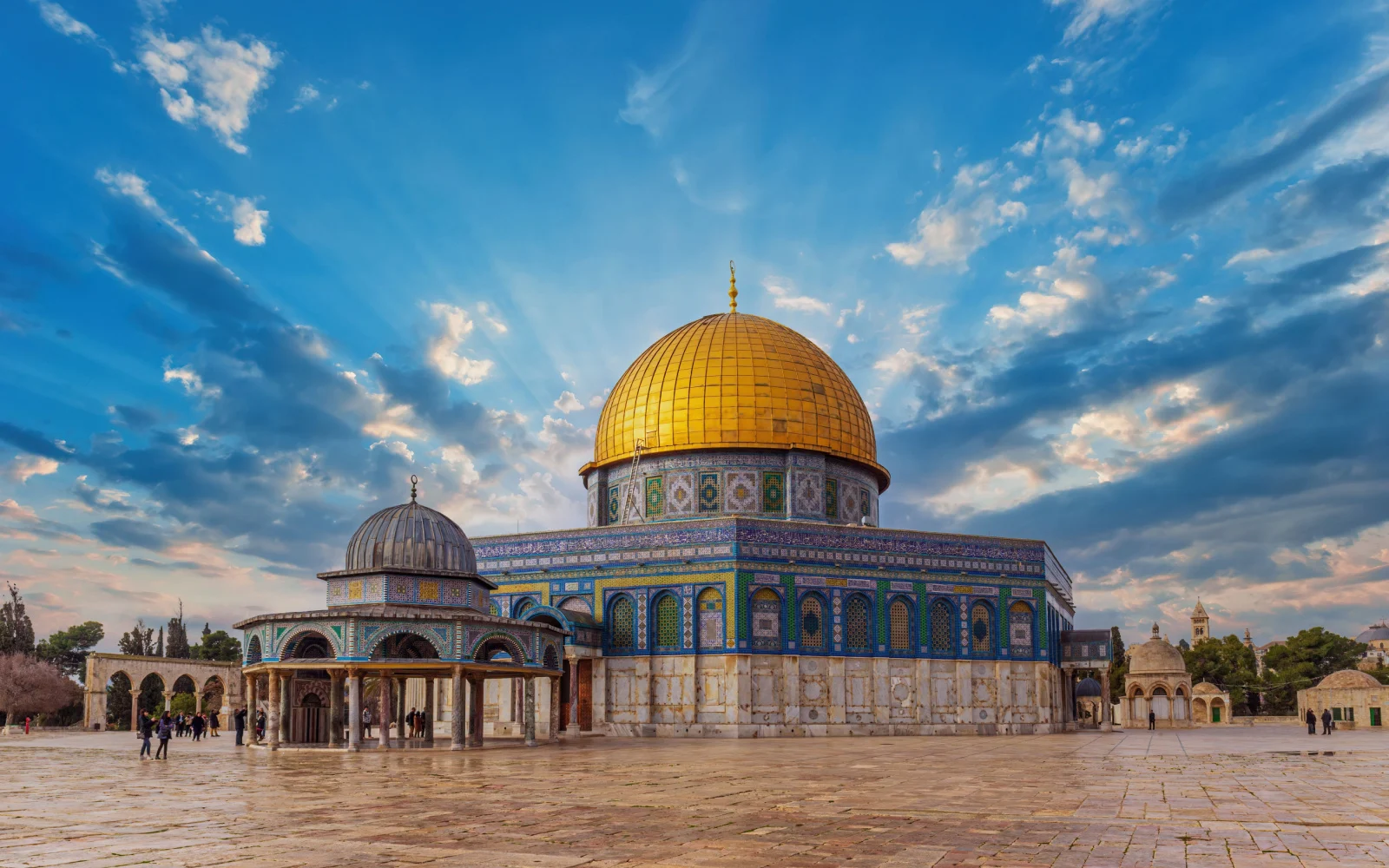There’s perhaps no city in the world that’s as culturally and historically rich as Jerusalem. It’s a sacred city for Christians, Jews and Muslims. There are strong religious and political passions, and history practically exudes from the stonework.
It can also be an expensive city for visitors. The standard of living is similar to what’s found in Europe, and many foods and goods have to be imported.
However, it doesn’t have to be a bank-breaker.
If you’ve been thinking about visiting this holy city, here’s a rundown of the expenses a typical tourist will encounter, along with some tips for making your Jerusalem journey as affordable as possible — let us be your guide!
Average Trip to Jerusalem Cost in 2025
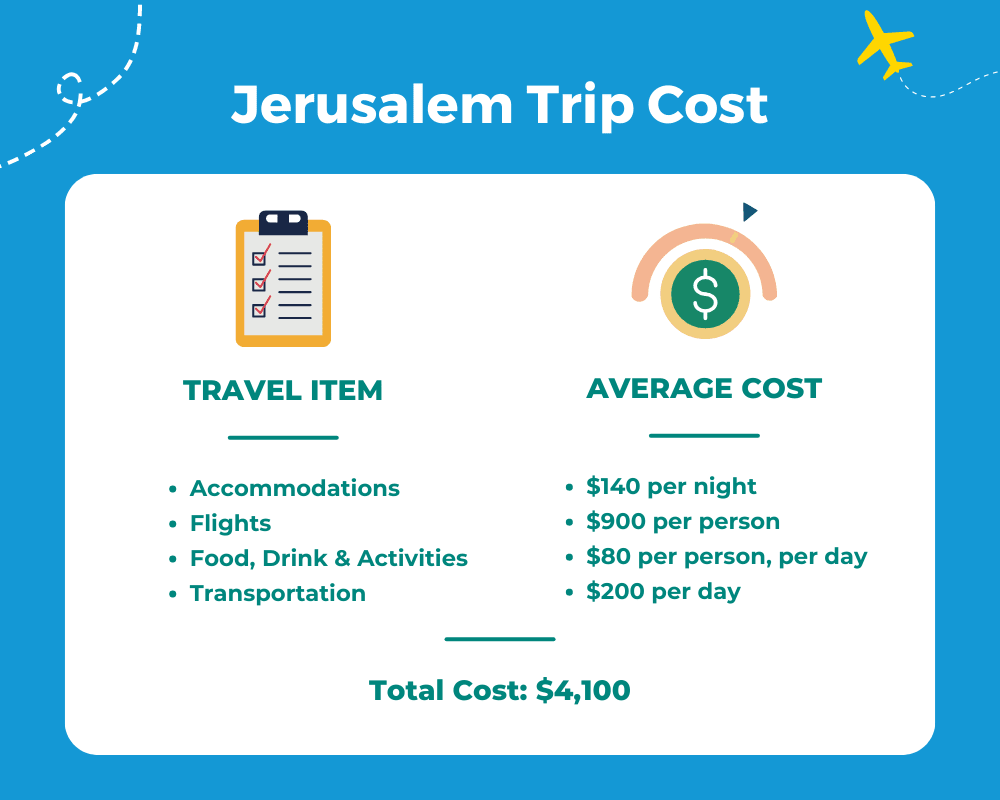
A one-week trip to Jerusalem for two will cost about $4,100:
- Average Accommodation Cost: $140 per night
- Average Flight Cost: $900 per person
- Food, Drink & Activities: $80 per person per day
- Transportation: $200
- Total Cost: $4,100
Jerusalem is not an inexpensive destination, with hotel and fine restaurant prices at the somewhat higher levels you can expect in the world’s major cities. However, there are a number of factors that make a Jerusalem vacation reasonably affordable.
Tahiti Trip Cost: Average by Item
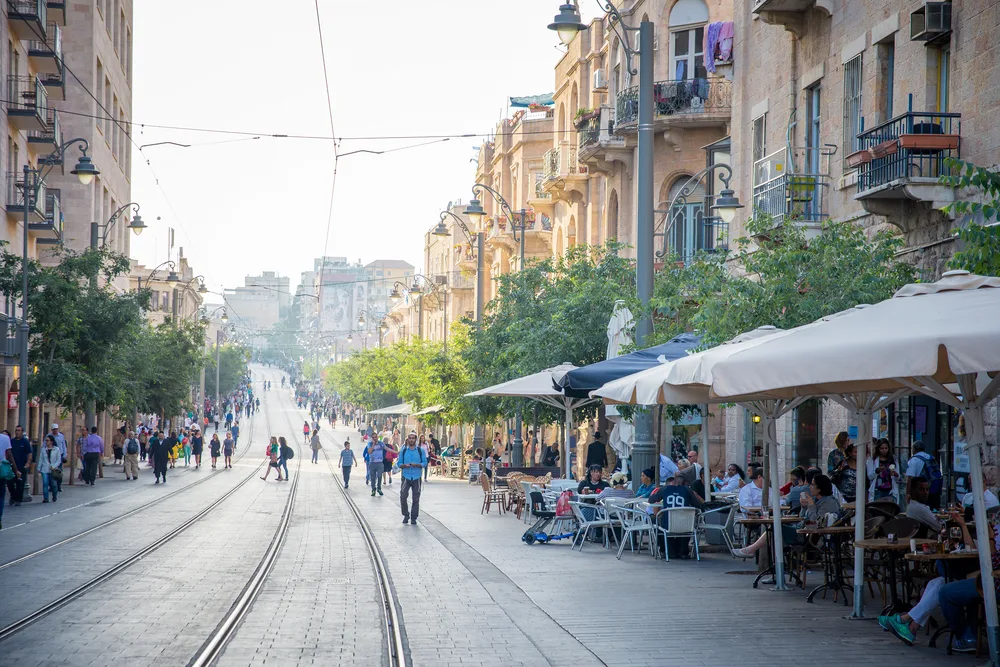
JERUSALEM, ISRAEL – JUNE 1, 2015:Jaffa Road is one of the longest and oldest major streets in Jerusalem. June 1, 2015. Jerusalem, Israel./badahos/Shutterstock
Once you’ve booked your flight and your room, you can choose to spend very little. Street food is cheap and plentiful.
Most of the sites that appeal to tourists have moderate fees or no fees at all. There’s not much reason to rent a car, you can see a lot just by walking, and inexpensive public transportation goes almost everywhere.
Accommodation Costs
A survey of 84 Jerusalem hotels reveals an average hotel price of about $130 with a median of around $120. The same survey states that budget hotels can be found for around $80 while luxury accommodation will be in the neighborhood of $250.
Prices tend to run about $50 higher in the Old City than in other areas.
During the peak tourist season, March to May and September to November, the nightly cost might rise to around $200, but during the winter it’s easier to find rates closer to $100. There are some hostels available, and you might find a dorm bed as low as $20-$30.
Flight Costs
The cost of flights from North America is not out of line with ticket prices from North America to Europe. Skyscanner has shown flights starting from $600 to $900 depending on the time of year.
Prices tend not to vary a lot when you fly from different parts of the U.S. Of course, ticket costs change all the time, and bargains are possible, but you might be able to find a fare to be in the $800-$1,000 range.
Flight times are 11-14 hours. Most planes fly into Ben Gurion Airport, which is just south of Tel Aviv and about 30 miles from Jerusalem. A bus trip to Jerusalem takes about an hour and should cost $5-$10.
Food, Drink & Activity Costs
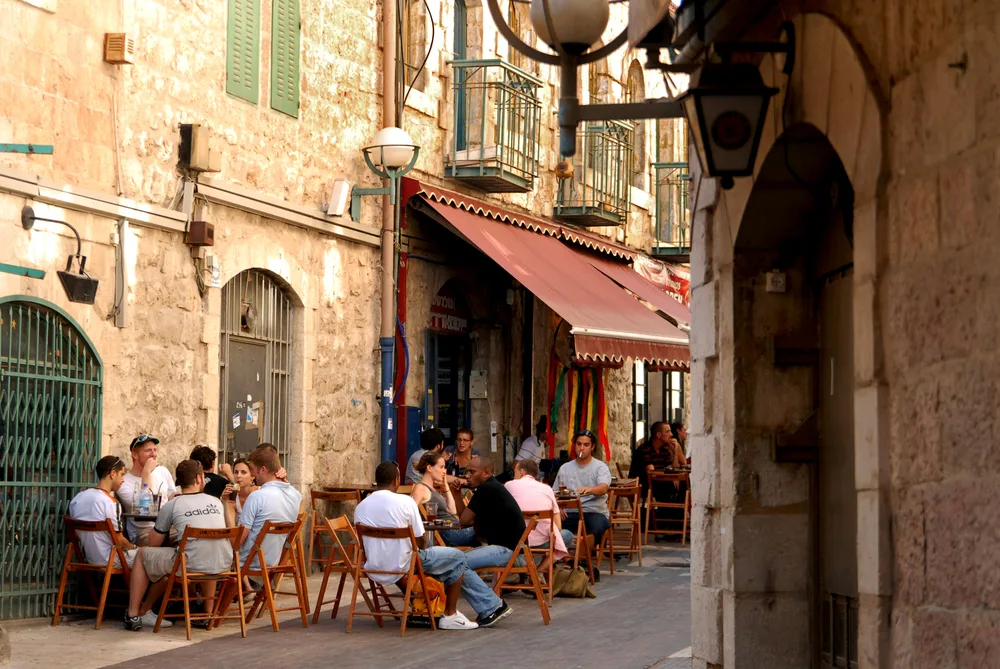
JERUSALEM – AUG 17:Young Israeli people dining cafe in Rivlin st Nahalat Shiva courtyard neighborhood.Israel’s population is considered young relative to the populations of other Western countries./ChameleonsEye/Shutterstock
All kinds of food are available in Jerusalem, including not only the expected Middle Eastern fare but also European and American cuisine. Restaurants are on the expensive side, but they aren’t the only option.
There are also bagel shops, fast food restaurants and plenty of regional street food. If you want to prepare your own, the are markets throughout the city and small food shops in the Old City.
Falafel is a staple street food, usually served with pita, salad, hummus and tahini. It can be as little as $5. Shawarma, meat that’s been roasted on a spit and sliced, comes with the same sides and runs $5-$10.
In the same price range, you’ll find Shakshuka, an egg-based breakfast dish, and malabi, a pistachio-flavored desert made from milk, sugar and cornstarch.
You can eat well from market, street vendors and small cafes for $20-$30 per day. Dinners at a restaurant, on the other hand, might run about $30 and can easily go $50 and up.
Most of the sights worth seeing in Jerusalem are either inexpensive or free. One of the must-dos is to walk around the Old City and stop to look at whatever piques your interest. You’ll probably want to wander in and out of the markets and shops.
The Old City is surrounded by a wall and contains most of the historically and religiously significant locations. Most tourists spend most of their time in the Old City.
West Jerusalem is the commercial center and is the most Israeli part of the city. East Jerusalem is more strongly Palestinian. Many of the Old City’s shrines, churches and museums have entrance fees, which run from $5-$20.
There’s no charge, however, to visit the famous and important Western Wall.
Sights worth seeing include the Dome of the Rock on the Temple Mount, the Church of the Holy Sepulchre, the Israel Museum, the Tower of David Museum, the Holocaust Museum, the Palestinian Heritage Museum and the various monasteries.
If you’re overwhelmed by the quantity and variety that Jerusalem has to offer, there are guided tours available. Some fill up in advance, so you may want to look into this while you’re planning your trip.
A guided tour, usually by bus, is a great way to take a day trip and see some of the nearby sites. Most of them include the historically famous fortress of Masada. There’s also the Dead Sea and sites important to Christians such as Nazareth and Bethlehem.
Bethlehem is under Palestinian control and requires passing though a checkpoint. Tripadvisor lists day trips out of Jerusalem from $50-$150, depending on how long they are and how many sites you visit.
Transportation Costs
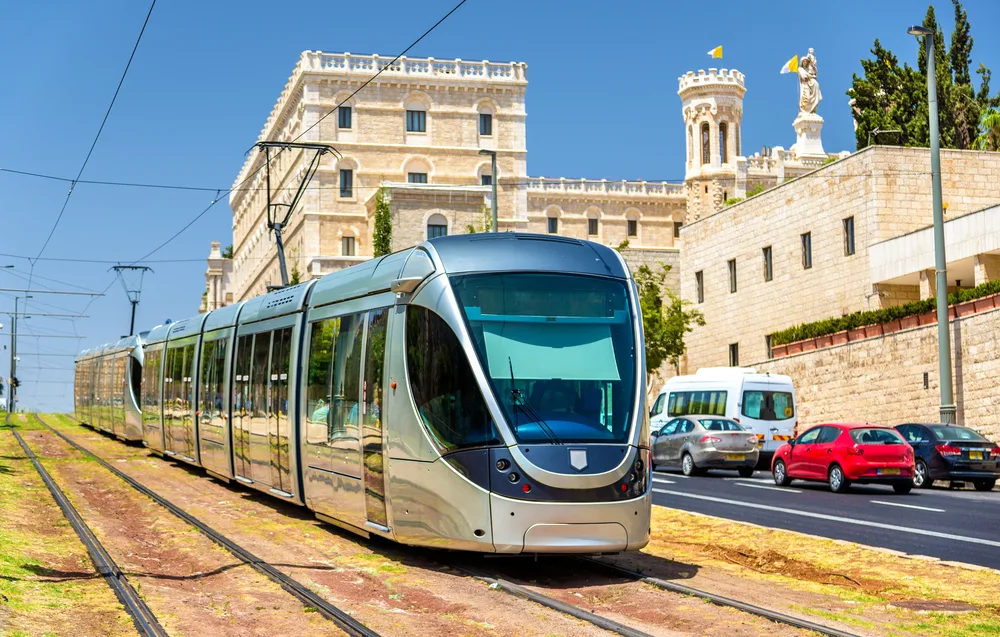
Leonid Andronov/Shutterstock
You don’t need a car to get around in Jerusalem. The Old City is walkable, and there are plenty of transportation options for the rest of the city. Taxis are reasonably priced, and they’re metered, so you know what you’re getting into.
A taxi ride in the central city might cost $10-$12. Buses are ubiquitous, crowded and cheap. They make frequent stop and go just about everywhere. A typical ride costs just a couple of dollars.
There’s also a light rail system that’s been in existence since 2011. The first lines run along the western edge of the city, and expansion is planned. The rail connects several popular markets and tourist areas. Rides are around $2.
You can buy a reloadable smart card to use on both buses and light rail. If you do choose to rent a car for a day trip or some other purpose, Kayak reports that you can expect to spend about $75 per day.
Things to Consider
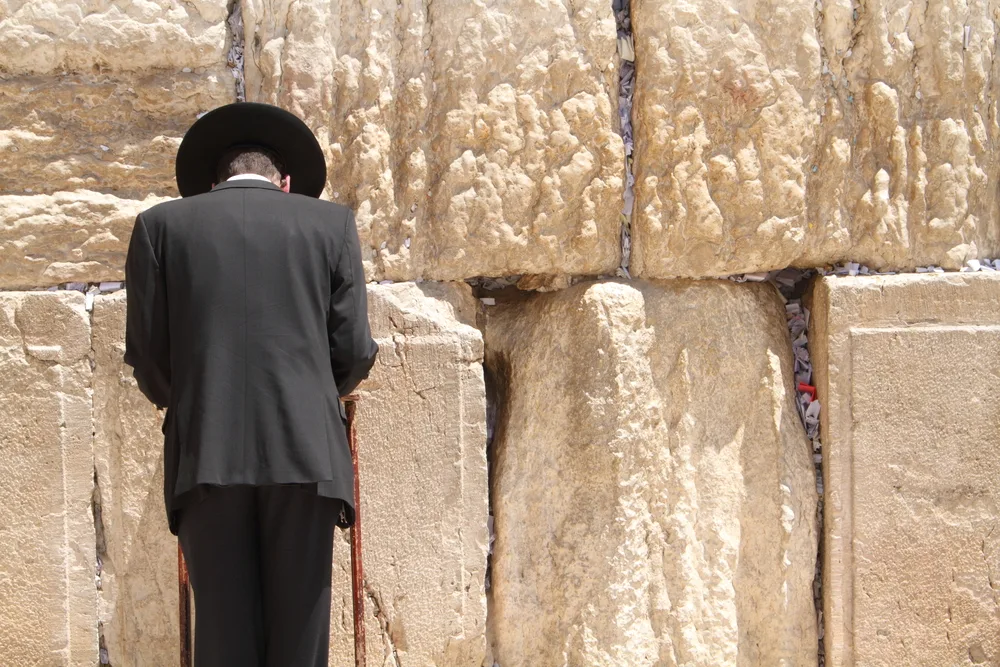
francesco de marco/Shutterstock
While Jerusalem welcomes Western tourists, and it may in some ways look like a Western city, it is very much Middle Eastern in its culture. There are some aspects of that culture that visitors need to be aware of.
These include:
- Dress appropriately. Avoid shorts and crop tops. This is especially important if you visit sites that are holy to Jews or Muslims. If you enter a mosque, women should cover their head and hair. A hijab is not necessary; a headscarf is fine. Both sexes should cover their knees and shoulders.
- Tipping is customary in Israel. Like American servers, Israeli servers depend on tips to earn a living wage. 10 to 15 percent is the normal amount. As in the U.S., not tipping is considered rude and cheap.
- Be open-minded about different religious beliefs. Many people who visit Jerusalem are deeply religious and have come to perform rituals that are important to them. Accept this and behave respectfully.
- Be cautious about expressing political opinions. There are contrasting views in Jerusalem, and people are passionate about them. A political discussion can turn into a shouting match rather quickly. If someone asks your opinion, you may respectfully share your views, but it’s best not to be the one who brings up the topic.
- Shabbat (Sabbath) is of huge importance in Jerusalem. It starts just before sunset on Friday and continues until after sunset on Saturday. Jewish residents stay at home, and everything comes to a halt. Restaurants and shops aren’t open, and public transportation stops running. Smokers even refrain from lighting up because it would violate the prohibition against kindling a fire on Shabbat. If you’re in Jerusalem on Sabbath, it’s best to follow the locals’ example and take a day off from activity, even if you’re not Jewish. Because so much is closed, it’s best not to fly into Israel on Saturday.
Frequently Asked Questions
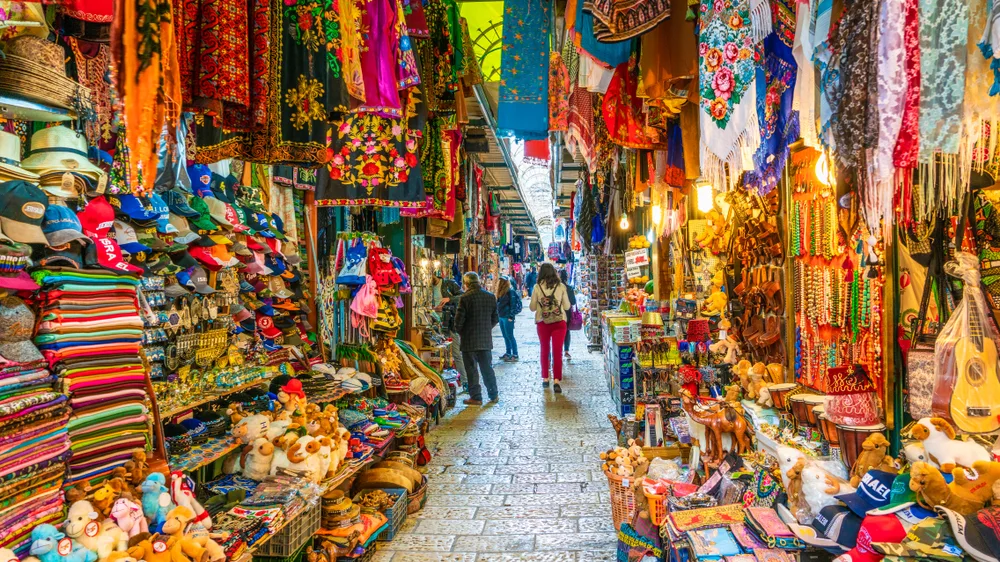
Jerusalem, Israel – March 27, 2019: View of souvenir market in old city Jerusalem, Israel/Serenity-H/Shutterstock
Here are some frequently asked questions to ensure that you’re able to properly budget your trip to Jerusalem:
Can I use American dollars in Israel?
No, dollars are not accepted. The official currency is the New Israeli Shekel. You can exchange your dollars for shekels at the airport, at banks and at some hotels. A shekel is worth about 27 cents; it has been worth slightly more in the past.
Do a lot of people speak English in Jerusalem?
English is widely spoken throughout Israel, and even more so in Jerusalem (and Tel Aviv as well). Hebrew is the principal language in West Jerusalem, while Arabic is commonly spoken in East Jerusalem, the Palestinian side of town.
English is particularly common in the Old City. Even if the only Hebrew word you know is “shalom,” you’ll get along just fine.
Is it safe to go to Jerusalem as a tourist?
While no place in Israel is completely exempt from the regional violence, Jerusalem remains relatively safe. Most trouble takes place at locations where tourists don’t normally visit.
How many days is enough to visit Jerusalem?
You can see most of the highlights in about three days. However, there are so many points of interest that you can spend the whole week and still not see everything.
Is Jerusalem a walkable city?
Yes, especially that parts of most interest to tourists. The City Center, the Old City and even a few neighborhoods outside the city walls are easy to walk to.
Can tourists go from Jerusalem to Bethlehem?
Yes, you can go with a group tour or on your own by bus or taxi. Because Bethlehem is controlled by the Palestinian Authority, you’ll have to go through a checkpoint. Israeli citizens need special approval to travel to Bethlehem, but there’s no restriction on tourists.
Over to You!
To recap, the average cost of a Jerusalem trip is as follows:
| 🛎️ Average Accommodation Cost | $140 per night |
| ✈️ Average Flight Cost | $900 per person |
| 🍽️ Food, Drink & Activities | $80 per person, per day |
| 🚕 Transportation | $200 per day |
| 💲 Total Cost | $4,100 |
If you stay in the nicest accommodations in a central location and eat at restaurants, you’ll spend quite a bit more than this.
If you choose modest accommodations and buy food from markets and street vendor, you trip can cost less. Once you’re there, it’s inexpensive to get around, and there’s plenty to see and do at low cost or no cost at all. Happy travels!



